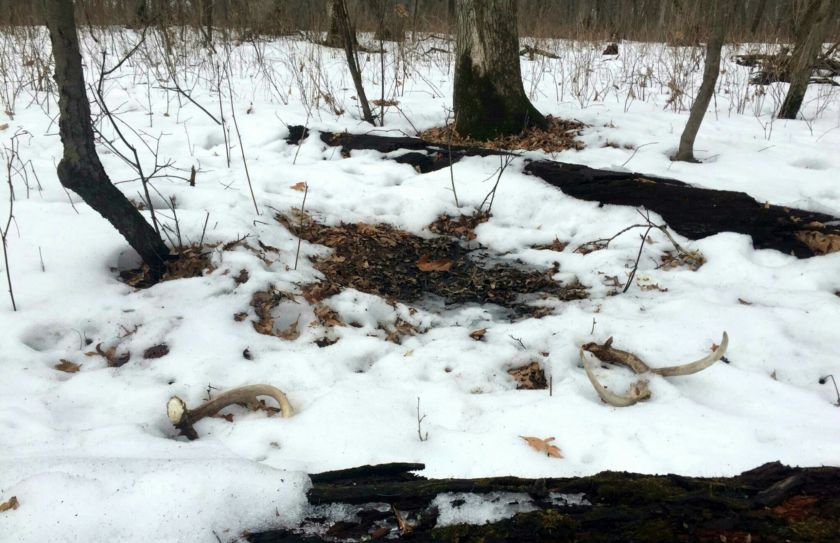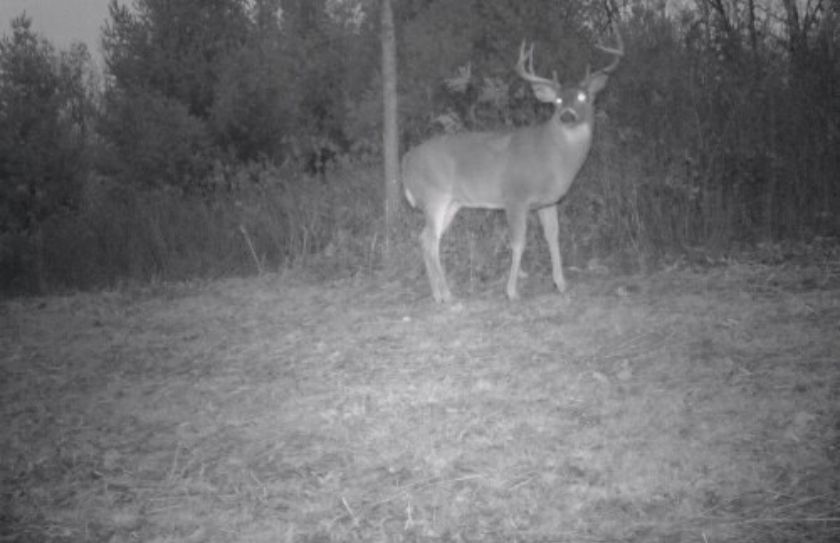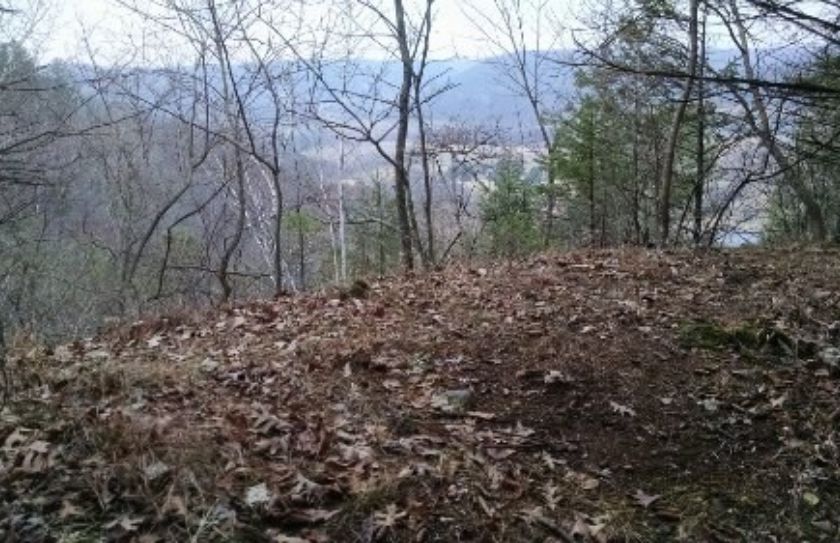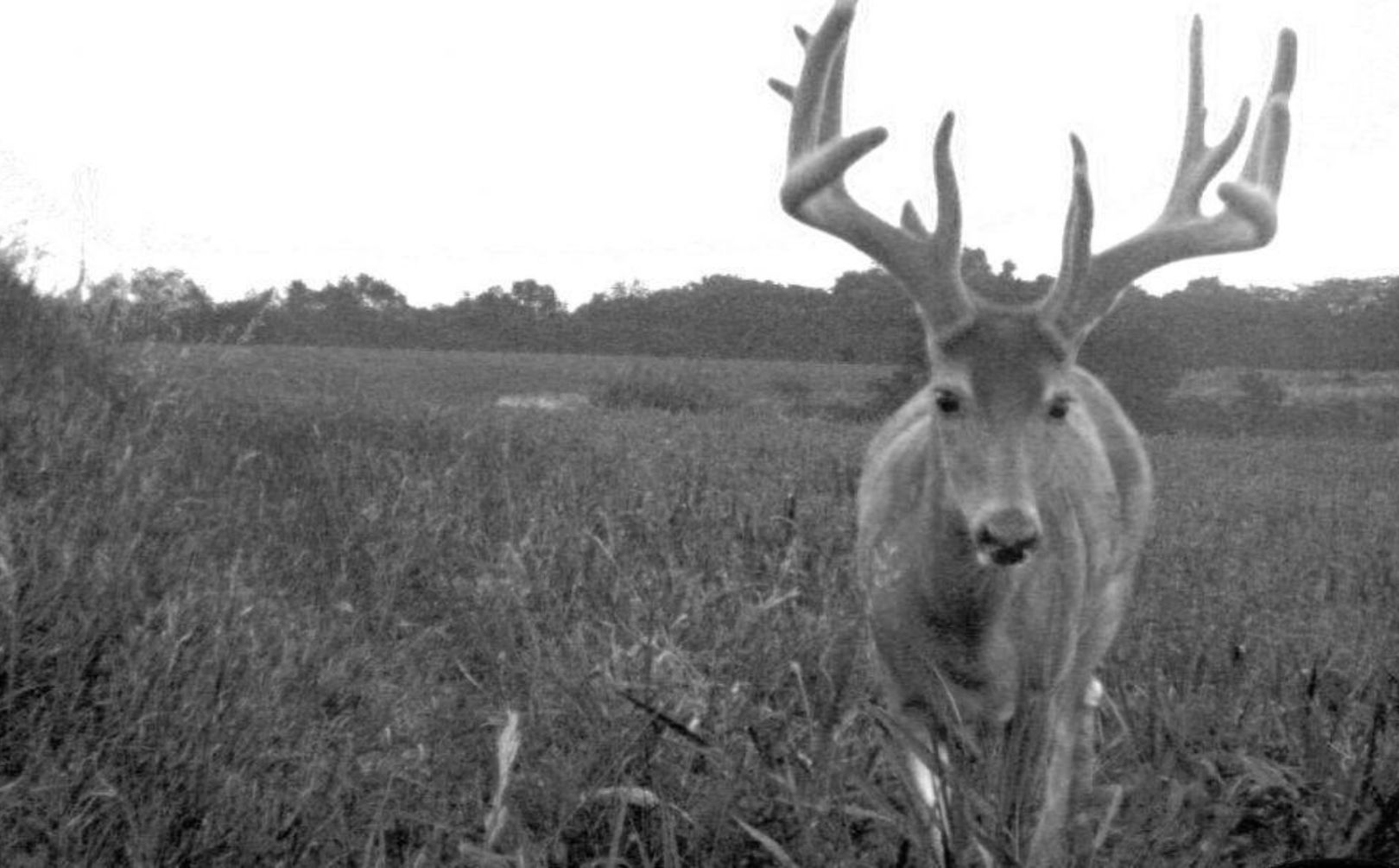
There are a variety of strategies that can be applied, when it it comes to figuring out exactly when to scout for mature bucks. The cool thing about deer in general, is that if you allow their daily movements to continue they can be highly predictable. This is especially true within the doe family group population, as their primary concern is food and cover, every single day. When you hear hunters talk about does being difficult to hunt, it is a sure sign that one if two things have happened:
*Make sure to check out my whitetail book series including, "Whitetail Success By Design" and "Food Plot Success By Design", to help you find mature bucks this hunting season!
1. Excessive hunting pressure has destroyed the predictability of the daily food to cover movement.
2. Fragmented habitat locations of food and cover, as well as their consistency, have created undefined potential movement patterns.
If you keep the doe population happy, adequately fed and safely housed they will be highly predictable within their daily movements.
However mature bucks are an entirely different creature when it comes to predictably narrowing down their often unpredictable movements. An entire book can be written about both scouting and hunting mature bucks. In fact I have at least 2 books coming out on the subject in the coming months. But for this article at this time of the year, I really wanted to focus on an opportunity that you can take advantage of for the upcoming season. Have you ever considered that a mature buck will tell you exactlywhen, where and why that he will show up, for seasons to come? Of course we all have contemplated exactly when, where and why a buck will show up in a given location at one time or another throughout hunting seasons past, but I have experienced that there are a few details that are often missed.
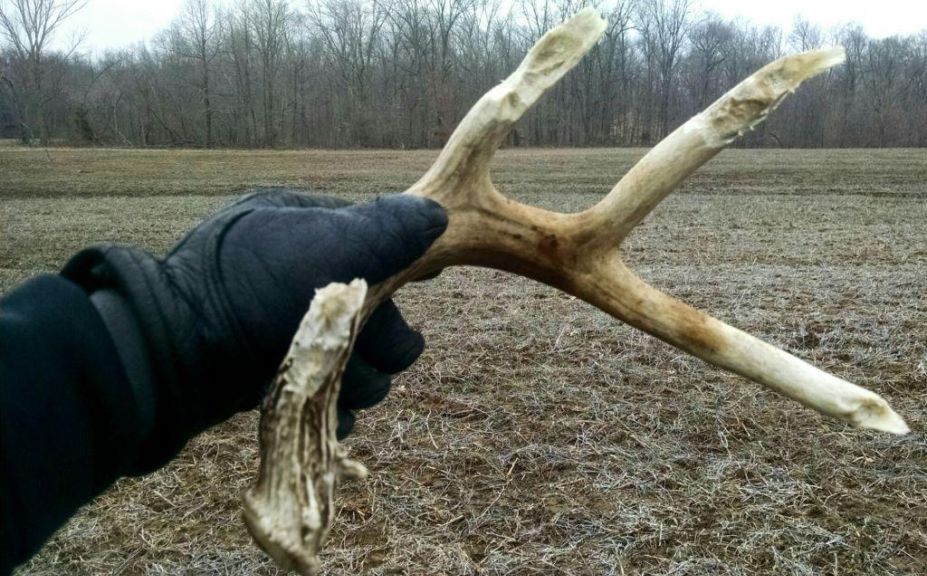
*Finding a great shed is awesome, but what does it tell you? To figure out what your next great shed find is telling you, try reading "Whitetail Shed Hunting Clues".
A Foreshadowing of When To Scout
I probably didn't listen as much as I should have during any of my English classes, but one of the aspects of creative writing that was really hammered home to me nearly 30 years ago, was the topic of "Foreshadowing. Basically within a book, a common practice is to reveal small details that eventually lead to coming events. Often these small details are very subtle and because they should be expertly written within the flow of the book, they may only be discovered when the foreshadowed event actually takes place. This is why I suggest scouring over your game cam pictures of years past, so that you do not miss the subtle clues that a mature buck has left for you.
A mature buck has foreshadowed his coming events, but I would like you to discover those small details so that you can predictably place yourself in the right deer stand at the right time, to take advantage of his movements. Think of a mature buck as a highly skilled author and you the hunter as the reader. As a hunter, we are constantly in the game of figuring out the end of the book before it takes place. When should you start to scout for mature buck for this season? Years ago, and you can accomplish this task by scouting your game cam pictures from years past. But be careful, as I have experienced, often the mature bucks that I harvest have only provided just a handful of pictures while foreshadowing their future movements.
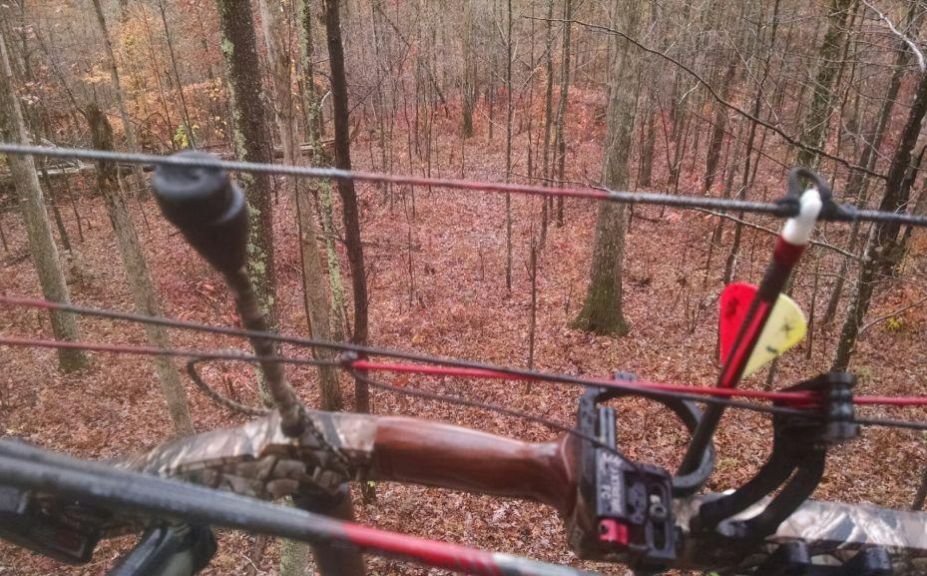
*A mature buck has often already told you where, when and why he will set foot in a particular location on your land, but have you discovered his subtle foreshadowing? For a complete guide for where, when and why to hunt mature bucks with a bow during the rut, try reading "Bowhunting The Phases of the Rut".
Scouting for Where a Buck Will Show Up Next
Now I have to be honest, even with the aid of trail cam photos, buck sign and an occasional sighting, the process of scouting for exactly where a buck will show himself during shooting hours, is much more difficult than it first appears. The difficulty lies in the fact that often where a buck gets his picture taken in the past, is not where he is telling you that you can hope to harvest him in the future. My two bucks in 2013 were great examples of this!
Both my 2013 bow and 2013 gun bucks were harvested from stands several hundred yards from where I had captured their pictures from. But the pictures of years past were primarily of night time movements, revealing not only the timing of when I could expect to actually have a chance at a successful hunt with the bucks, but where not to. The experiences with these 2 bucks during previous years told me that if I wanted to connect with either buck, I would have to do so in an area to take advantage of daytime movements, which did not end up being where I had previously captured their pictures.
By using trail cam photos, rubs, scrapes and sometimes personal observations (although typically I rarely physically see the mature bucks I harvest before I harvest them), you can discover where a mature buck has the best chance of revealing himself during the hours of daylight. This is especially important as it relates to my own personal hunting and game camera strategy. I like to place cameras mostly in heavy social locations that have a high probability of capturing pictures of the majority of the bucks in the area, and then use those pictures to tell me when and where the mature bucks are traveling from to get their pictures taken. I Often shoot the bucks at great distances from the locations they get their pictures taken because I reason that if a buck travels from a certain direction, he must be bedding in XYZ bedding area, which means I need to hunt him out of one of 2 to 3 pre hung stands, depending on the time of day or time of season.
What Will Scouting the Past Reveal About the Future?
The question of when to scout for mature bucks is an important strategy, but exactly why a buck will choose to travel in a certain location, at a particular time is just as important. There are of course exceptions, but for effeciency I tend to lump mature bucks into 2 categories:
1. Bucks who live on the land I hunt or close by -or-
2. Bucks who primarily live 2-3 parcels away
I refer to those as core and non-core bucks, or sometimes local and non-local. But either way, each buck determines a different set of strategies:
1. Core bucks can be hunted effectively early and often throughout the entire hunting season, while non-core bucks should typically be hunted only during the peak rut, gun season opener or possibly over a late season food source.
2. Core bucks should provide numerous, consistent game cam pictures during the hours of shooting light, or close to those hours, while non-core bucks will typically reveal to you random, middle-of-the-night movements with just a handful of pictures per year.
3. Not always, but core bucks often live somewhere else during the Summer months, and non-core bucks often live on your land, during the Summer months.
Figuring out if you are hunting primarily core or non-core bucks will reveal a lot about the type of habitat that you are primarily hunting, as well as when to actually hunt a particular buck. You can think of it this way, if you have the combination of heavy cover habitat combined with great Fall food sources, while featuring low levels of hunting pressure you will have an attractive setting for core, mature bucks. If you have a great supply of Summer food sources and light cover habitat, your land will actually repel potential core bucks for the hunting season. But either way, you can still hunt mature bucks by hunting their foreshadowed movements as predetermined by your scouting efforts.
As a general rule I "go in for the kill" on core bucks early and often, primarily defining my hunting efforts by the rise and fall of the hunting season temperatures, as influenced by the passing cold fronts. However with non-core bucks (such as both of my bucks in 2013), I target specific windows of cold front patterns during the peak to post rut phases during November, during the first few days of gun season, or during the late season over a high quality food source.
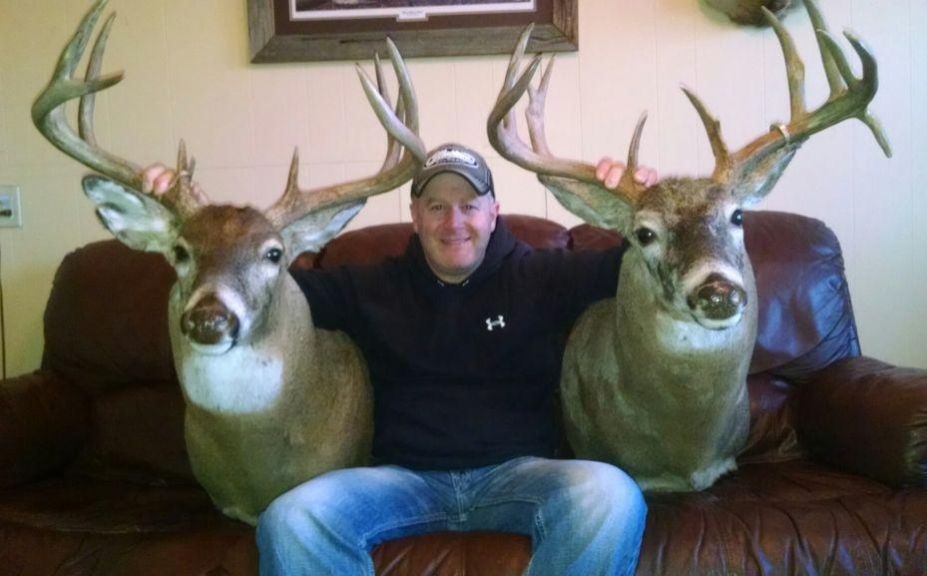
*It pays to use previous scouting clues to not only determine when and where a mature buck will be, but why. These 2013 "none core" monsters revealed very few clues throughout their life, but there were enough! My scouting efforts over 2-3 years determined that I needed to hunt both bucks only during a specific windows of opportunity, well away from the the location of the majority of their clues. To read more about hunting core giants, check out "Core Mature Buck Hunting Strategies".
Conclusion
I suggest that you determine when to scout for mature bucks, by starting as far back as you can, to discover any shred of details that a mature buck has already provided to you. There have been several times in the past where I just wasn't open enough to realize how many clues a mature buck had revealed to me, concerning when, where and why he would offer a harvest opportunity. I can think of a 184" 7 year old, core buck monster that we didn't fully narrow down, scout and understand until he was in his 7th year. We would have been incredibly happy to harvest him as a 4, 5, or 6 year old! However in hindsight even though the sign, pics and personal sightings provided the story of his defined daily patterns, the author was just too masterfully subtle in his mysterious writings. In the 7th year we shifted our efforts to two stands located 400-600 yards away from the majority of his pictures, and we experienced 2 opportunities in 2 sits, in 2 stand locations without ultimately closing the hunt. He was killed by a neighbor over a 1/2 mile away, as he hunted a "non-core" buck that he had only a handful of pictures of in total.
When should you scout for mature buck? Early, often and continuous as you practice discovering the foreshadowing of the tiny details that have already been revealed to you.
